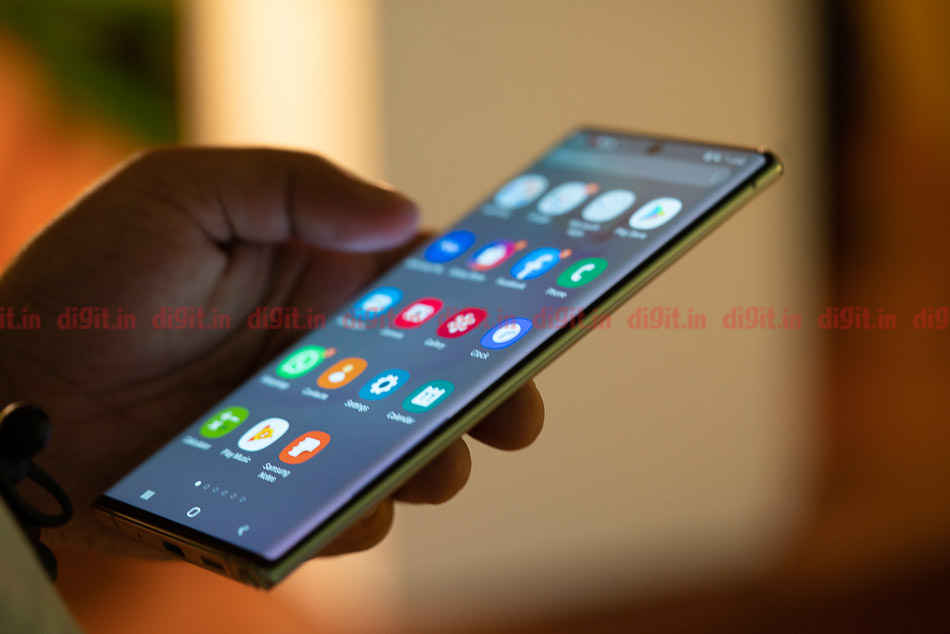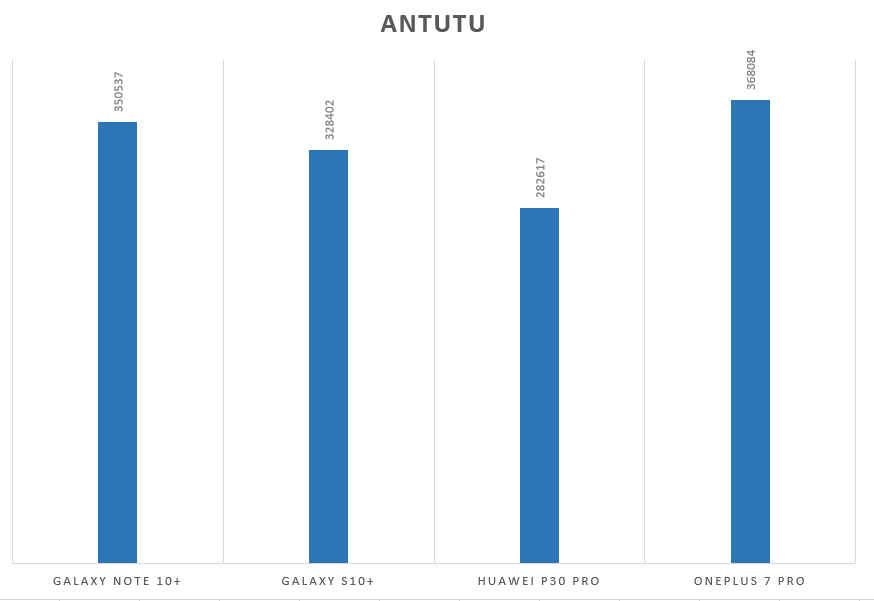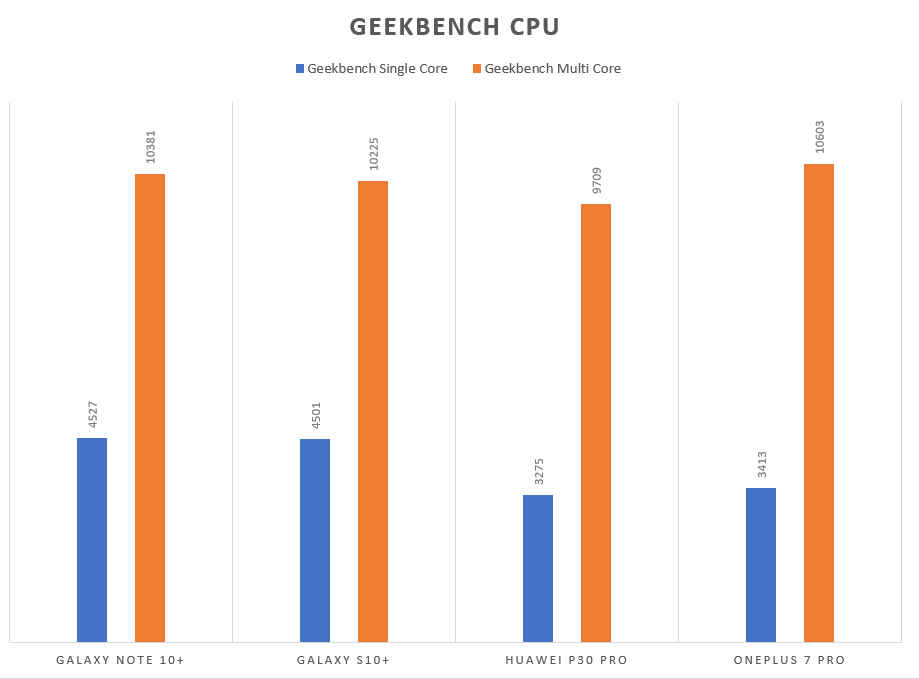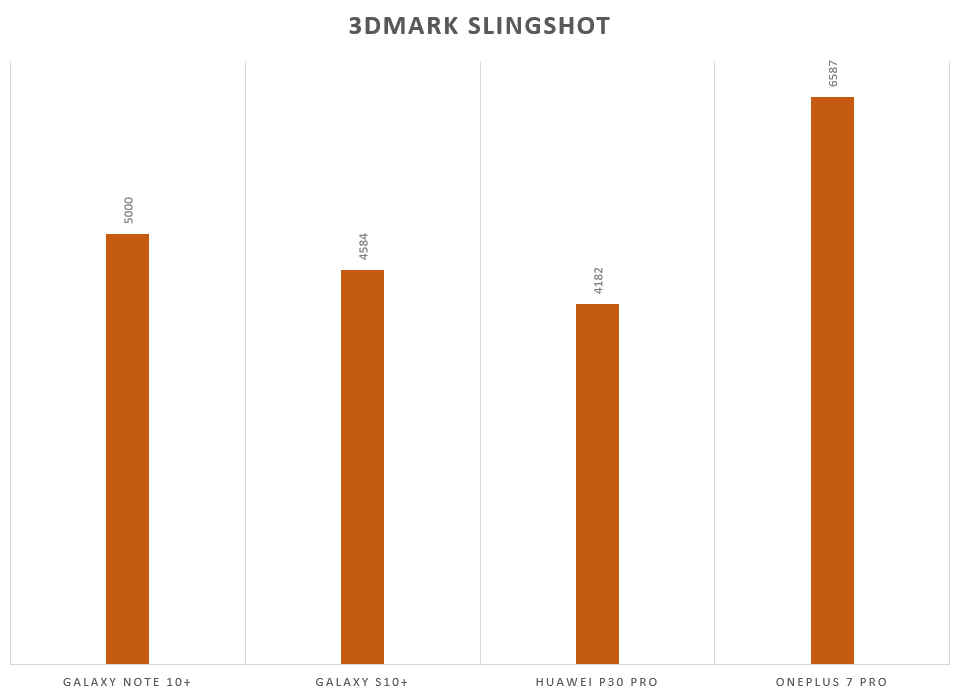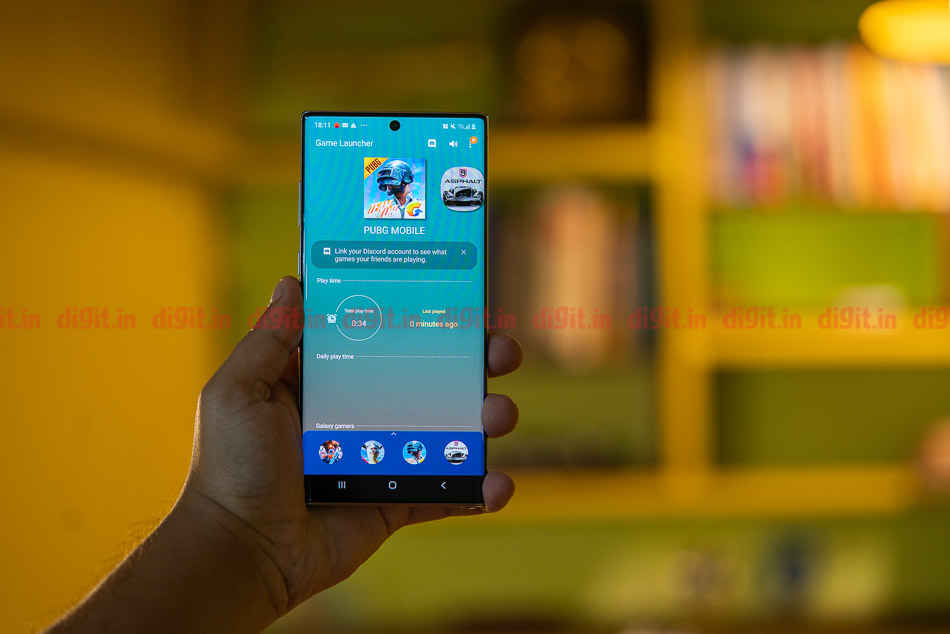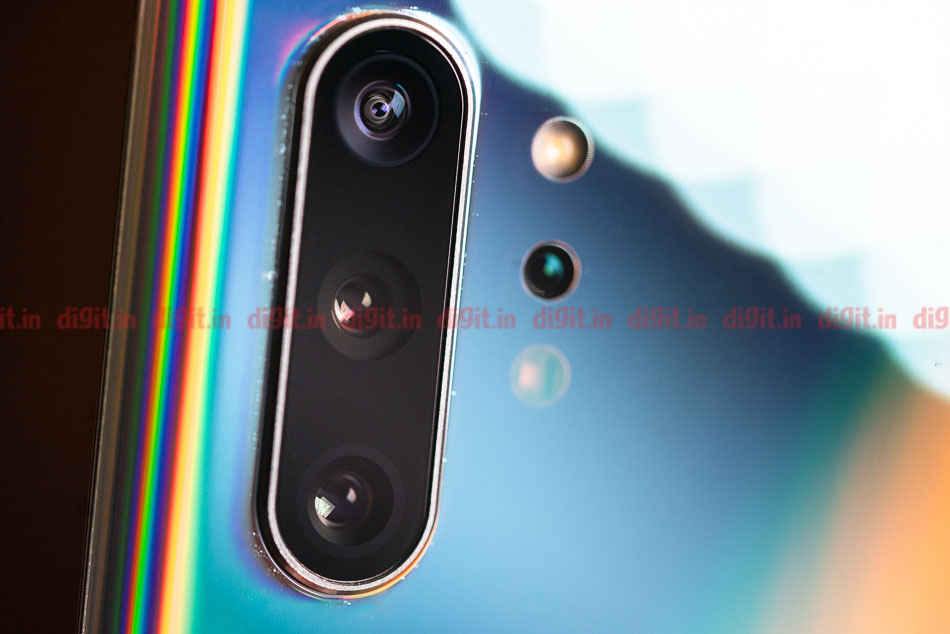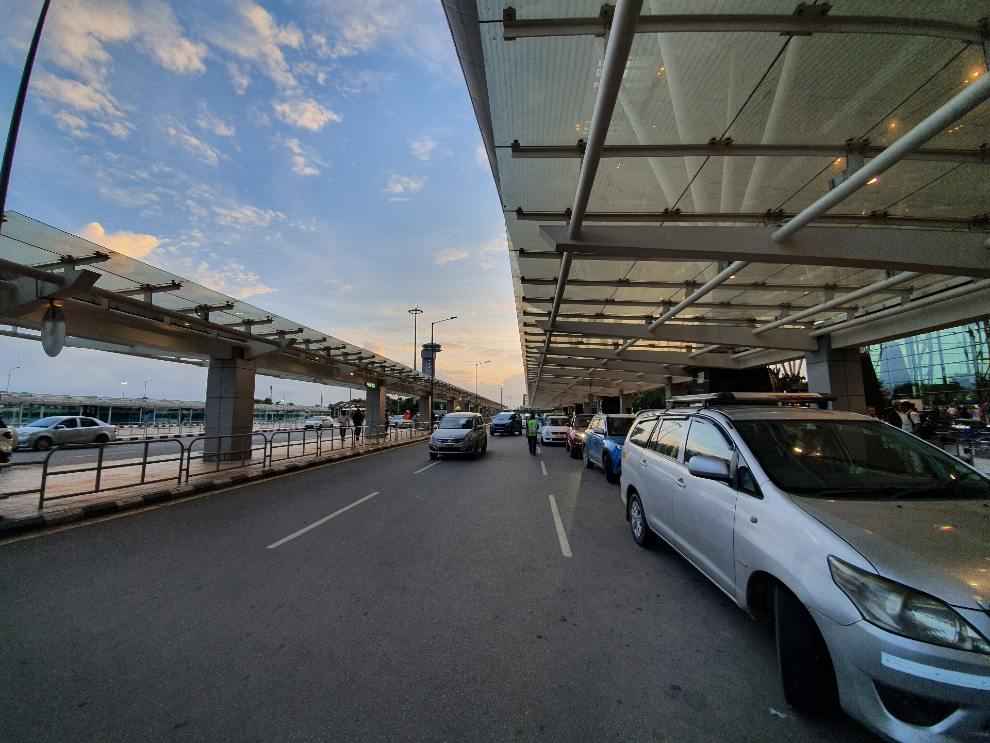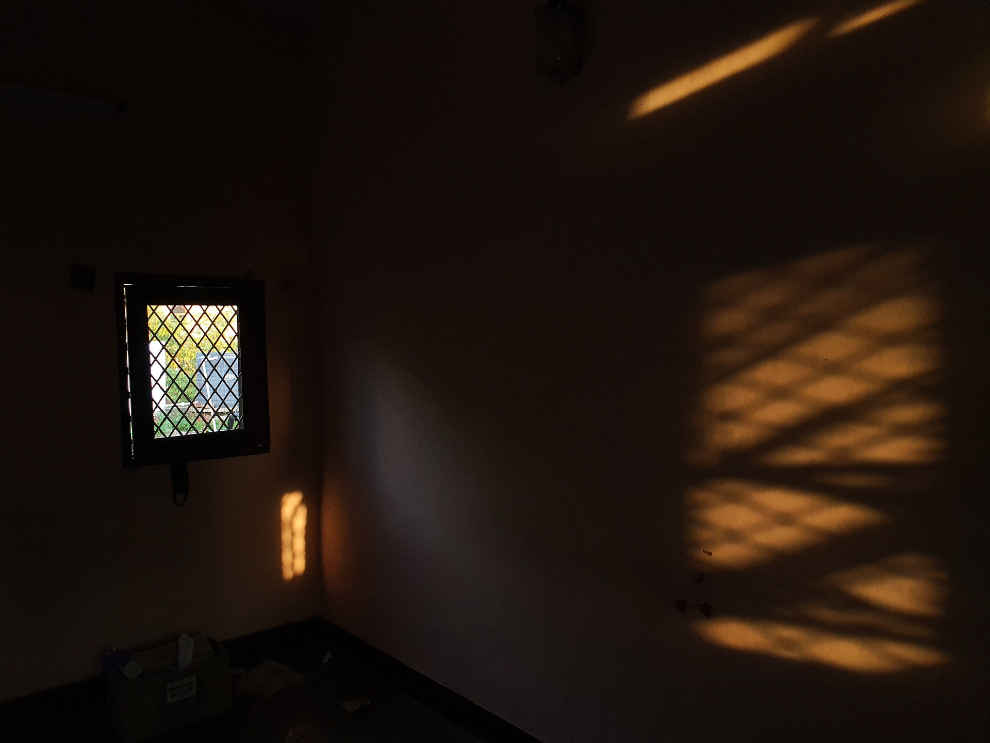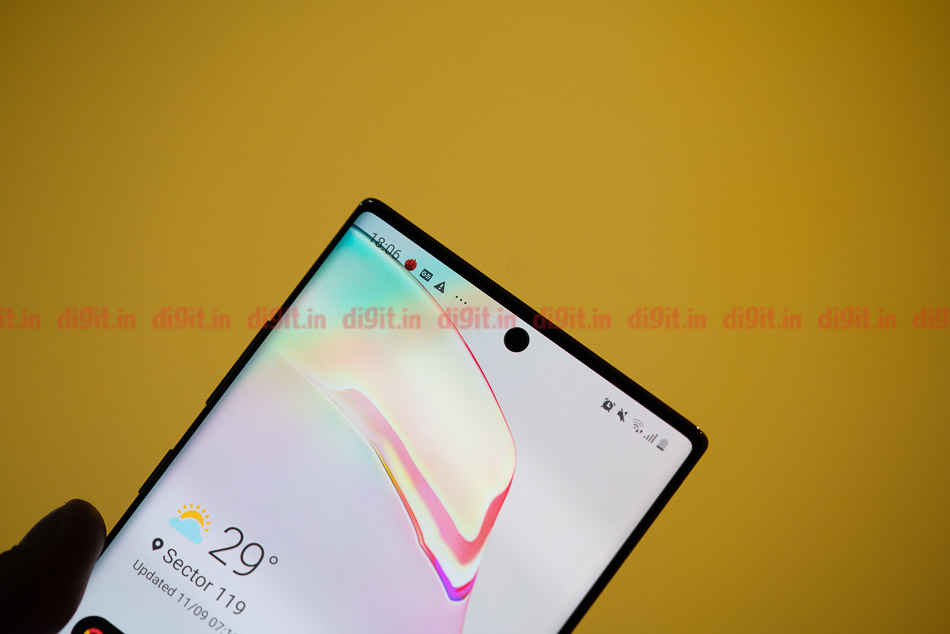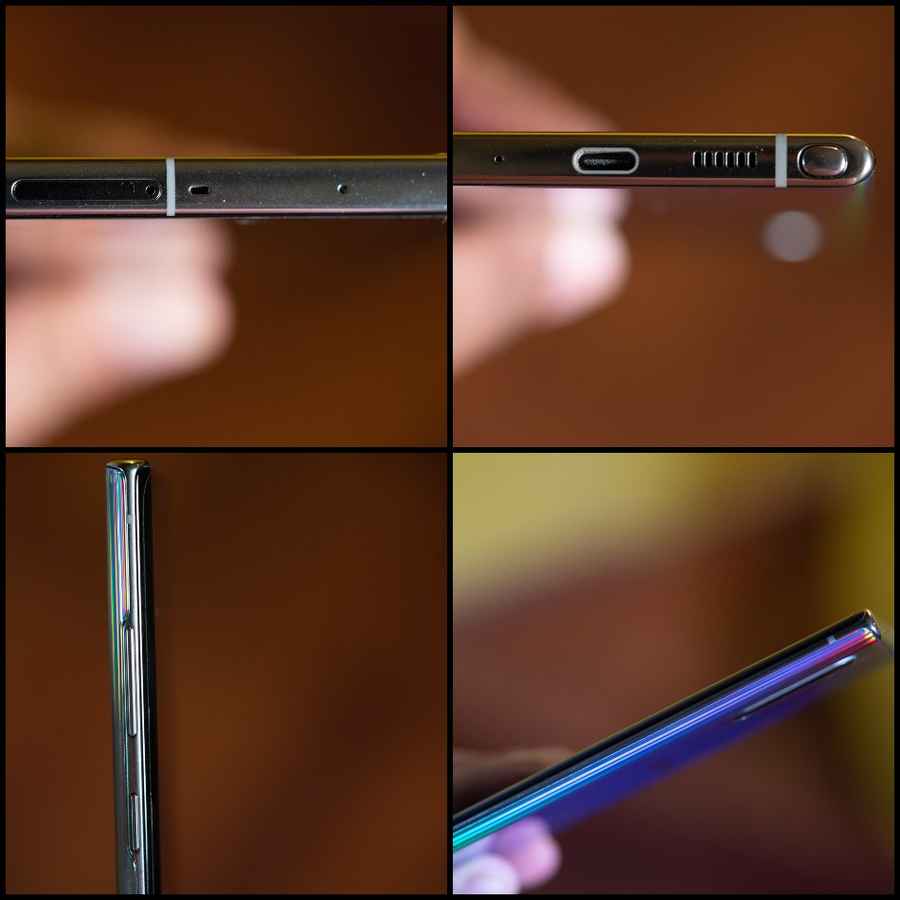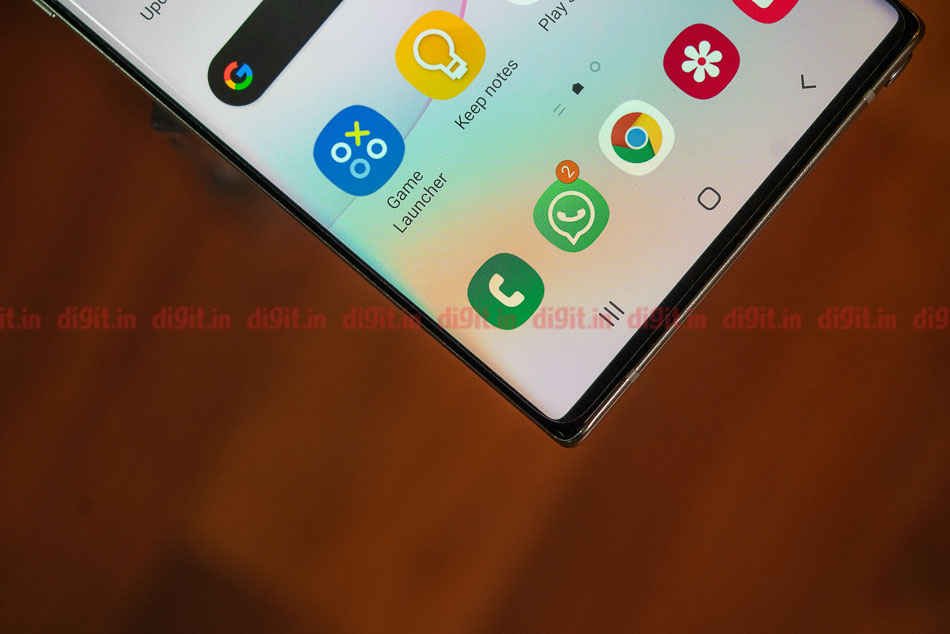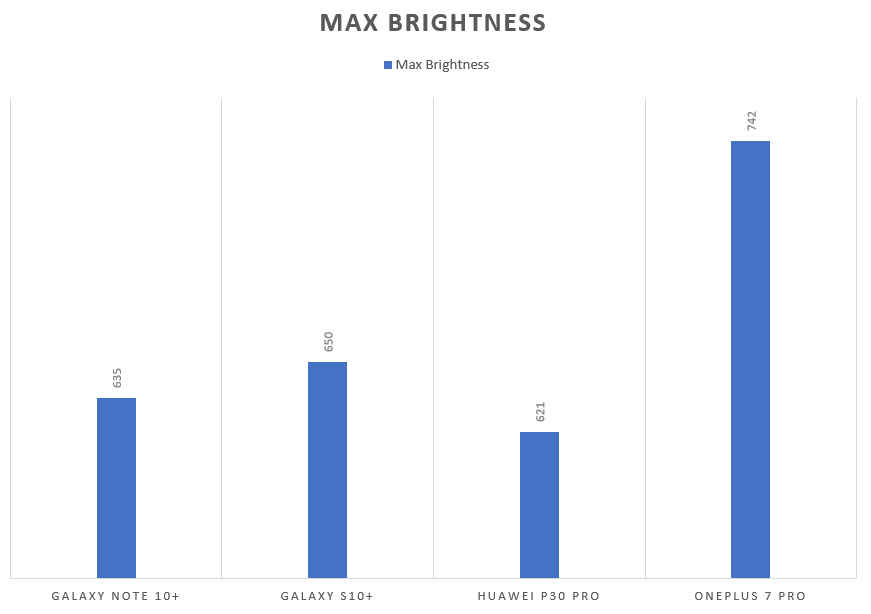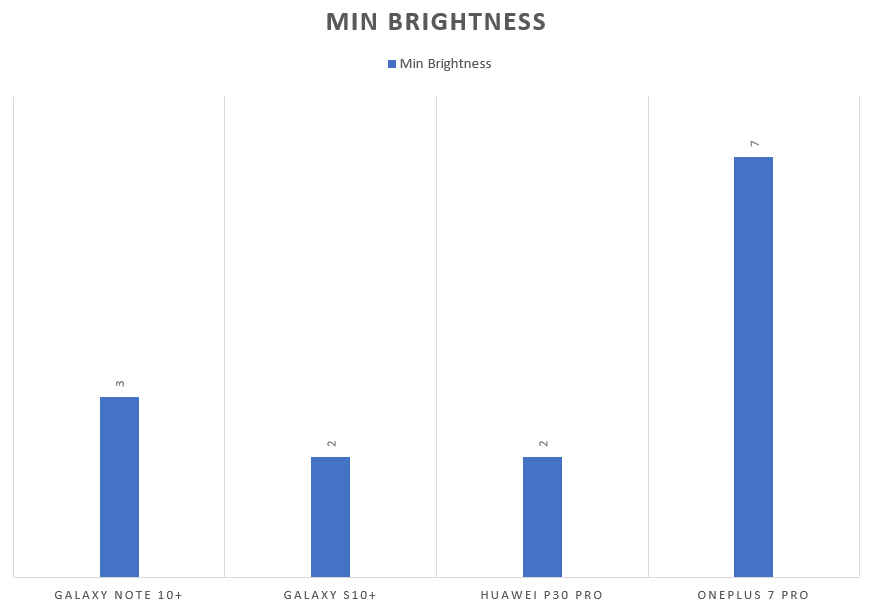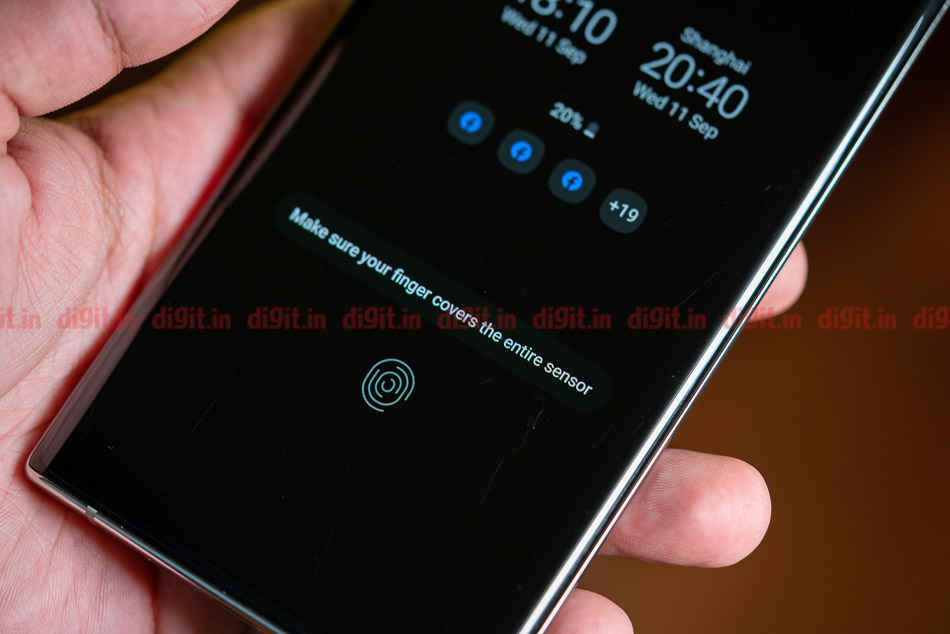Samsung Galaxy Note 10+ Review : Big things come in big packages
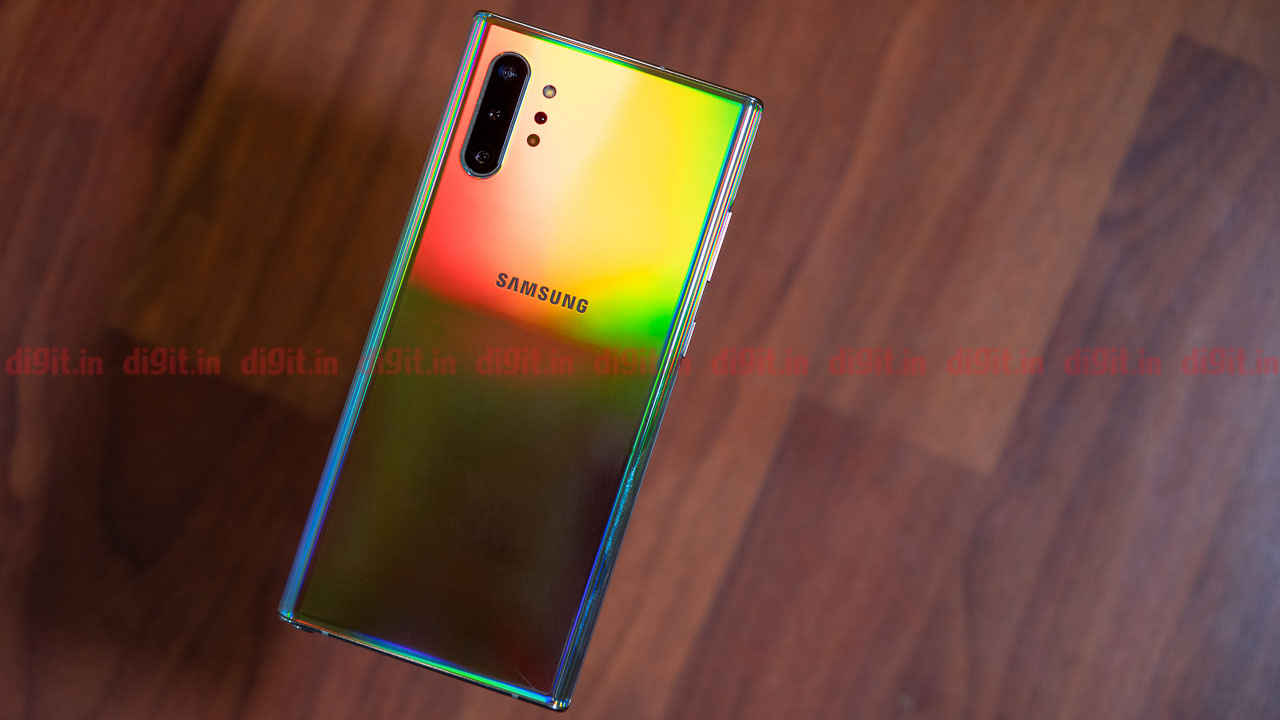
The Samsung Galaxy Note 10+ comes across as a phone very similar to the Galaxy S10+, save for a few new features that may or may not turn out to be useful. There’s a lot of reason for old Note users to upgrade to this one. Then there’s the smaller Galaxy Note as well which comes with watered-down features including a smaller display and form factor which might find acceptance among a new breed of power users eager to get the Galaxy Note experience. What I really liked about the phone is how Samsung has improved the camera performance, especially in low-light, and the new DeX mode that now works much better than before. Overall, the Galaxy Note 10+ feels like an incremental upgrade, but good enough for old Note users to get a new one.
Two weeks into using the Galaxy Note 10+, it’s easy to see why people fawn over the flagship series so much. But then I also used the Galaxy Note 9 and the Note 8 extensively, and between the Note 10+ and the Note 9, the inherent experience hasn’t changed much. Samsung has heaped a lot of new features on it, that adds on to the experience of using the Note flagship. But is it really transformative? Let’s find out —
Performance – 7nm makes Exynos finally at par with Snapdragon
The new Exynos 9825 is based on the new 7nm EUV manufacturing process, as compared to the 8nm Exynos 9820 in the Galaxy S10 series. Most of the benefits of the new chipset are in terms of efficiency. Performance wise, only the mid-core in the SoC now has a slightly higher clock speed, up to 2.4GHz from 2.31GHz, but then again, Samsung also downclocked the efficiency core from 1.95GHz to 1.9GHz. The GPU inside is the same. The changes are minor, and the benchmark results of the Note 10+ are largely similar to those of the Galaxy S10+ performed. Interestingly, the OnePlus 7 Pro, which comes with more or less the same hardware inside (Snapdragon 855, 12GB RAM, UFS 3.0 storage), has beaten the Galaxy Note 10+ in all the major benchmarks You can see the scores below —
Yet, these are just simulated scenarios. In the real world, the Galaxy Note 10+ is a charm to use. It’s visibly faster than the Samsung Galaxy S10 that I have been using ever since it launched in India, which could primarily be because of the UFS 3.0 storage and 12GB RAM module that always keeps around 5 GB RAM free. There’s an anomaly, however. We noticed that OneUI’s resource management is too aggressive. It tends to kill most of the background apps if they are running for long. Case in point: BatteryLog app which clocks every time the battery drops a percent kept stopping within minutes, even after whitelisting it under the memory section. Even then, the Note 10+ keeps around 6.7GB RAM in use all the time with around 5.3 GB free for everything. It’s still a lot more than what most flagships offer, but the high RAM usage doesn’t match up to the aggressive resource management.
Nearly everything you throw at the Note 10+ is handled without any hiccups. Be it editing a RAW file on Lightroom, writing an article, shooting a 4K video, or playing an intensive game, the Note 10+ has no problems whatsoever in getting them done. That way, it’s perfect for power users. But then again, you get the same performance and reliability from the OnePlus 7 Pro which is much cheaper than the Samsung flagship.
Gaming on the Samsung Galaxy Note 10+ is also a delight, unless you are chasing the highest frame-rates. The screen is gorgeous and expansive enough to give a lot of hand-space, but the frame rates we clocked on PUBG Mobile and Asphalt 9 using Gamebench were much lower than what we saw on the OnePlus 7 Pro, for instance. PUBG Mobile ran at 40FPS with 88 percent stability, where it could go up to 60 FPS. Asphalt 9 gave 30 FPS with 96 percent stability. Impressively, the phone hardly got warm during the sessions.
One thing that sets the Note 10+ apart, is the revamped DeX experience. You can now access the desktop mode simply by connecting the phone to the USB port. DeX is now more akin to Windows than ever before. Apps get the full-screen and windowed modes, you can launch all the apps on your phone, and even get the Windows shortcut to work in the environment. It's however not as smooth as Windows and in fact a little sluggish. But then most of the Windows shortcuts work in DeX. I did try to write this review in the DeX mode but had to give up halfway since not all apps (including Microsoft Excel, Dropbox Paper) offer every feature. There’s no hot-switching between Windows and DeX either. To go back, you have to turn off the desktop mode. Samsung said you can even attend calls on your desktop, but the feature is not live yet.
My argument here is why would I need DeX in the first place? Yes, it works much better now, but I saw no reason to switch from a perfectly functioning Windows environment to a mobile experience that can't really match up to the smooth operation that Windows or MacOS offers.
My next gripe is with the S-Pen itself. It's what sets the Galaxy Note series apart from the rest and has been a useful addition during the early years. But over time, the S-Pen's use-cases have primarily been restricted to creative professionals or casual doodlers, both quite a small subset of users. This time, Samsung added Bluetooth to the S-Pen and it now supports air gestures. Presently, the air gestures are a bit rusty. We used them to control the camera and the circular motion to zoom in would often be mistaken for the flick gesture to switch from rear to front camera. Good thing is Samsung has opened up the SDK for the feature, but it remains to be seen how many developers actually incorporate it.
Battery Life – Boosted by the processor and a larger battery
The Galaxy Note 10+ in India ships with the new Exynos 9825 SoC while in the US, it ships with the Snapdragon 855. Before with the Galaxy S10, there was a noticeable difference, not in raw performance, but in power efficiency, based on the reviews and reports from around the world. Now that Samsung has switched to the latest 7nm EUV lithography process, we were promised better power efficiency. Now there is a boost in screen-on time and all things including a larger display taken into account, the screen-on time has increased by an hour or so. Then again, it’s difficult to say whether that’s due to the slightly larger 4300mAh battery (as compared to the 4100mAh on the Galaxy S10+), or from shifting to the best manufacturing process available for now.
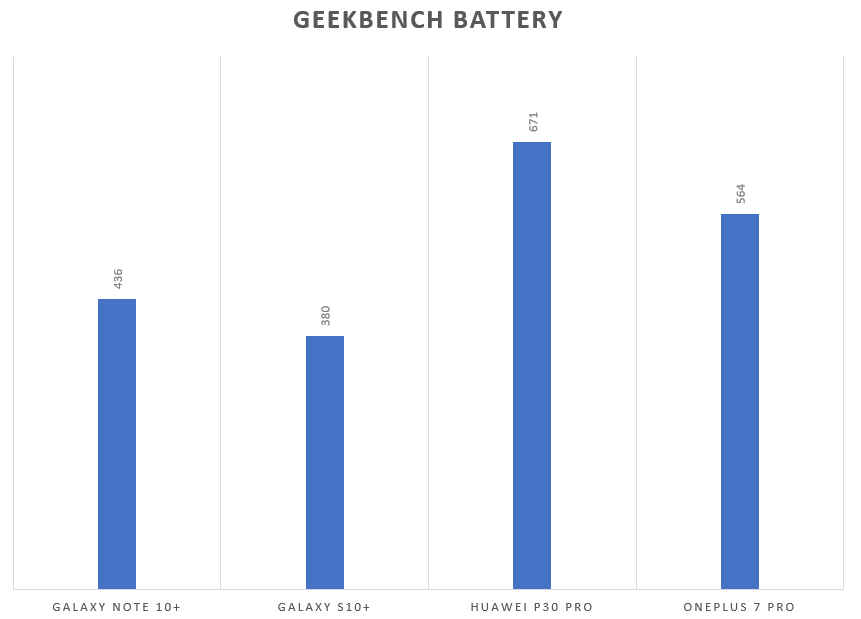
We clocked 7 hours 16 minutes on Geekbench Battery life, an hour and a half higher than what the Galaxy S10+ gave. 15 minutes of PUBG Mobile drained the battery by 6 percent. So did 30 minutes of HDR content on Netflix. But it was our video loop test that went on for over 12 hours.
Camera – Software does the trick
You thought the Galaxy S10+ 's camera was overkill? The Note 10+ goes a step further and incorporates a ToF 3D camera along with the wide, ultrawide and telephoto lenses. It’s essentially the same set of lenses that’s there on the Galaxy S10+ 5G in the US. Yet, between the S10+ and the Note 10+, I feel Samsung has tuned the software even further so the images (especially in low-light) come out a lot better. There’s a dedicated night mode now, and live focus in video.
The Samsung Galaxy S10+ camera came out on top when we compared it against premium flagships in the first half of 2019. The Note 10+ picks up from there and improves on the colours, sharpness and details. It’s still essentially the same hardware inside though. So there’s a very good chance even the Galaxy S10+ might get the new software trickery that’s there on the Note 10+ eventually.
Examining the new night mode, it employs the same technique that other OEMs like OnePlus and Huawei uses. Shooting multiple photos and fusing them together to get higher sharpness and details. A first for Samsung, it works quite well in enhancing low-light photos as the samples above will tell you. Don’t try to pixel-peep though, because that’s when the photos start losing details.
The Live Focus video, however, is a little patchy. It’s supposed to keep the camera focused on a (moving) subject but it keeps switching focus from the foreground to the background, resulting in a messed up bokeh video. The blurring, though, is quite nice.
Design and display – Premium, cutting-edge and durable
The Galaxy Note 10+ takes after the S-series with the Aura colours that paints a RGB reflection on the rear panel. You see a new colour on the back of the phone at every different angle you hold from the Aura Glow variant we received for review. Certainly quite premium. There’s also Aura Black and Aura White colours that are meant for more buyers more conservative in their choices. The Note 10+ is housed in the same sturdy aluminium frame like the S10+ with glass sandwiching on both sides. It’s reinforced with Gorilla Glass 6 that’s around two times more durable than its predecessor and its IP68 water and dust resistant.
Between the S10+ and the Note 10+, the camera on the front has changed position. From the right corner, the single front camera is now drilled bang into the center. It does alter the aesthetic, but doesn’t really come in the way of viewing things. The 3.5mm headphone jack port is now history with the Galaxy Note 10+ one of the last flagships to ditch the legacy port. Interestingly, you don’t even get a 3.5mm to USB-C converter in the box, but a pair of AKG-tuned earphones with USB-C out is packed in the box.
The Galaxy Note series’ display used to be one for everyone to beat. But this time around, the peak brightness we got from the Note 10+ under the sun was 635 lux, much lower than the 742 lux the OnePlus 7 Pro achieves. It’s even lower than the Galaxy S10+’s display. Yet, the AMOLED panel is HDR10+ rated and has QHD+ resolution. This alone makes objects in the display appear super sharp and crisp with excellent contrasts. HDR content on the 6.8-inch panel looks lively and vibrant, and you can play HDR content across all streaming platforms. With OneUI, however, Samsung did reduce the number of options to tweak the display settings. It’s set to Natural colours and FHD+ resolution by default which you can tweak to Vivid colours and either HD+ or QHD+ resolution. The Note 10+ is also an excellent phone to read content on before going to bed. The minimum brightness the panel can go to is 3 lux, and there’s a blue light filter, which together protect the eyes at night.
Bottomline
The Samsung Galaxy Note 10+ comes across as a phone very similar to the Galaxy S10+, save for a few new features that may or may not turn out to be useful. There’s a lot of reason for old Note users to upgrade to this one. Then there’s the smaller Galaxy Note as well which comes with watered-down features including a smaller display and form factor which might find acceptance among a new breed of power users eager to get the Galaxy Note experience. What I really liked about the phone is how Samsung has improved the camera performance, especially in low-light, and the new DeX mode that now works much better than before. Overall, the Galaxy Note 10+ feels like an incremental upgrade, but good enough for old Note users to get a new one.

